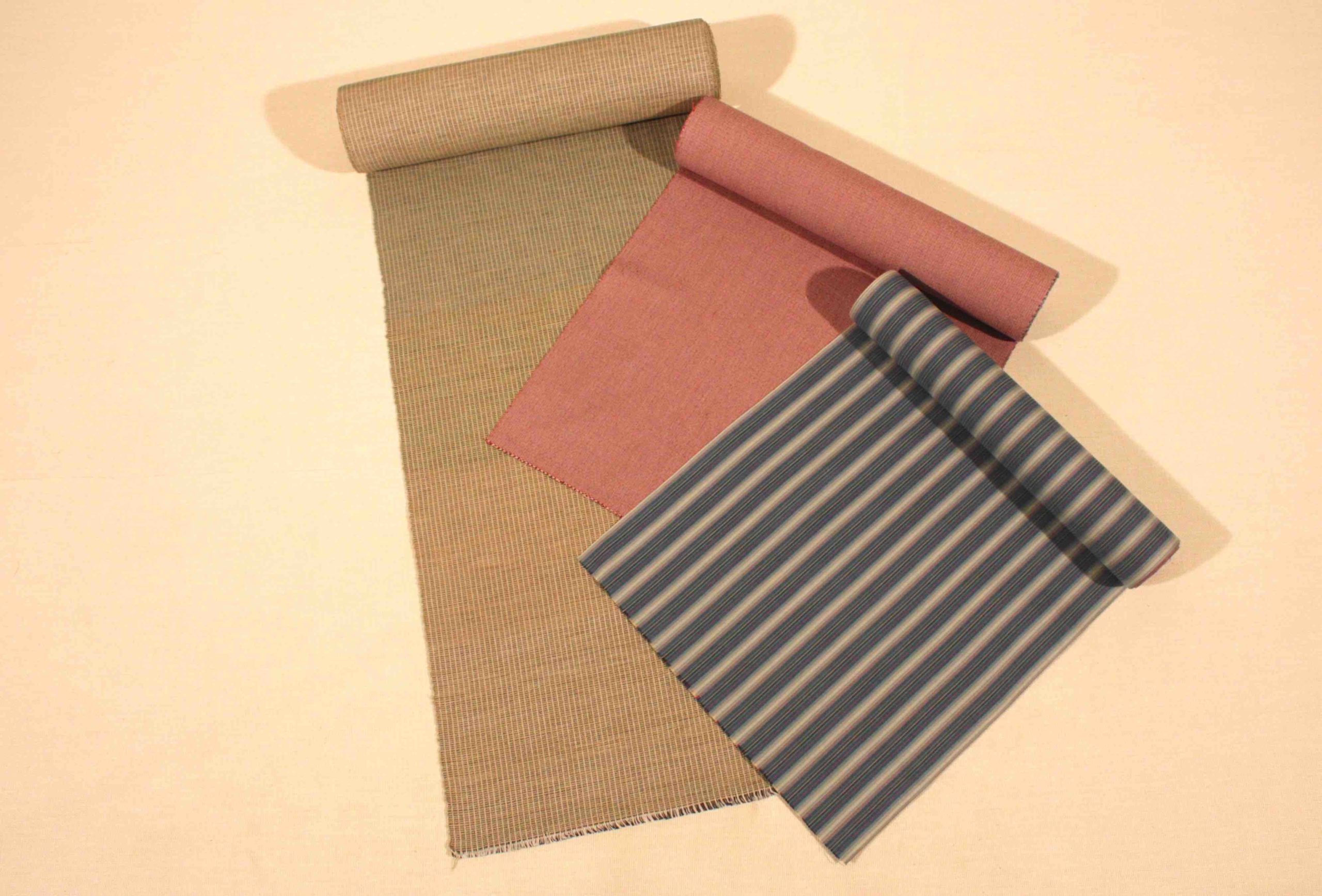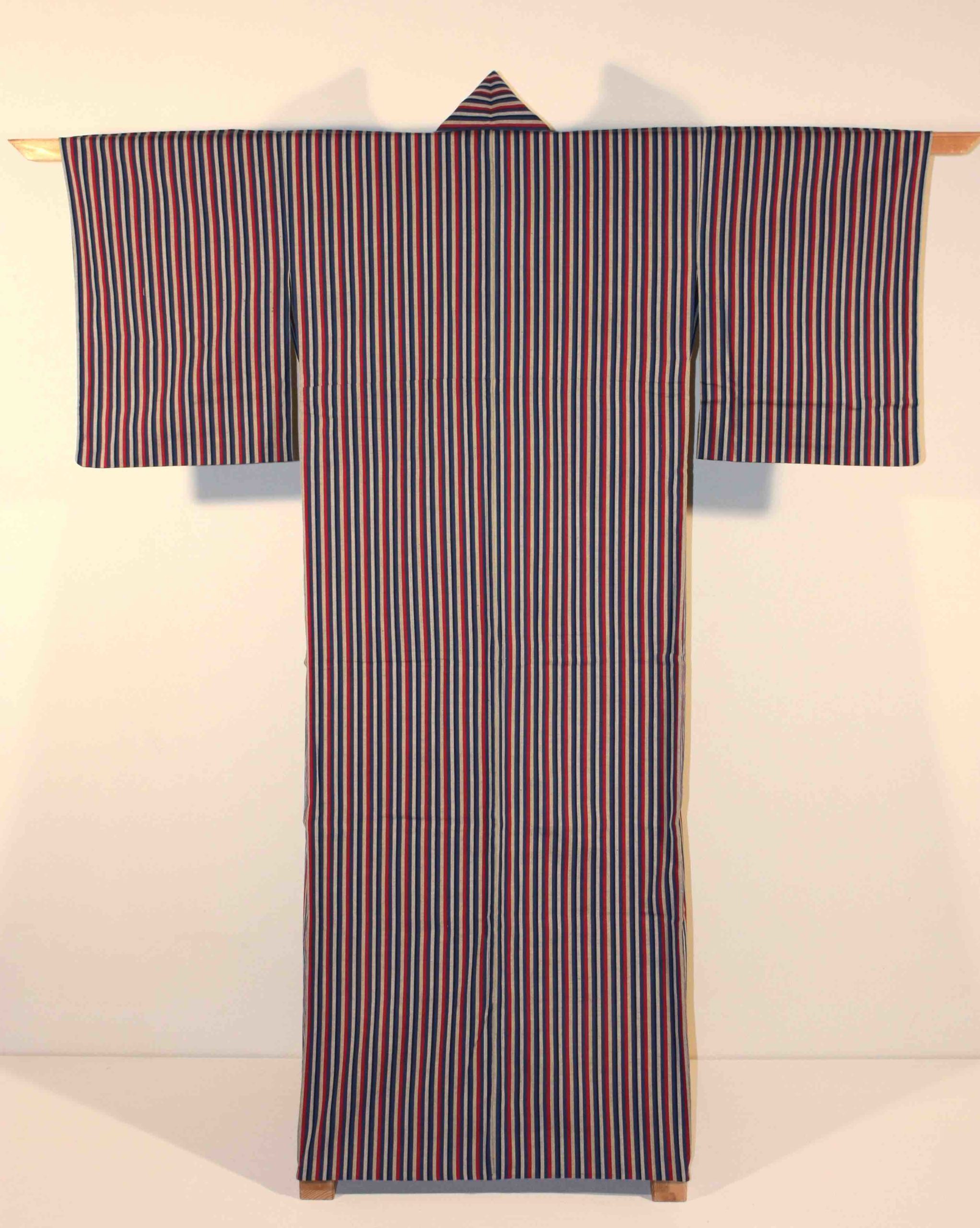館山唐棧
Pronunciation: Tateyama-tozan
Production area: Tateyama City, Chiba Prefecture
Tateyama-tozan is a cotton textile characterized by fine cotton threads dyed with natural plant-based colors, arranged in distinctive striped patterns. The cloth is kinuta-uchi (pounded with wooden mallets), giving it a silky luster and texture despite being cotton. Common dyes include genuine indigo (shōai), yamamomo (Myrica rubra), oak bark, gallnut, yaguruma-bushi, and others, producing hues of indigo, brown, gray, yellow, light blue, red, reddish brown, and dark red. The origin of Tozan-ori dates back to the Azuchi-Momoyama period (late 16th century), when Dutch ships brought striped Indian cotton textiles to Japan. These imported fabrics, known as Tozan-dome-shima or Karatozan-dome, were luxury goods worn only by the upper classes. During the Tenpō Reforms (1840s), when silk garments were banned, Tozan gained popularity as a substitute for silk. Production spread throughout Japan, with Kawagoe Tozan from Saitama becoming especially renowned. Tateyama-tozan weaving began around 1890, when craftsman Mosuke Saito learned the technique from Kawagoe weavers and introduced it to Tateyama. The Saito family has preserved the tradition for three generations. Although demand declined with the rise of synthetic fibers and Western clothing, Tateyama-tozan continues to be valued for its refined designs, with the Saito family in Tateyama remaining its sole keepers today.


Photo courtesy ofPhoto courtesy of Tateyama City



















